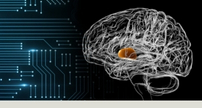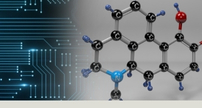Parkinson's Disease & Parkinsonism
Clinical Overviews
Parkinson's Disease
Parkinson’s disease (PD) is a neurodegenerative disorder characterized primarily by loss of dopamine neurons in the substantia nigra. Symptoms generally develop on one body side slowly over years but the progression may differ from one person to another due to the diversity of the disease. People with PD may experience tremor, mainly at rest (described as pill rolling tremor in hands), bradykinesia, limb rigidity, gait and balance problems. Prevalence is approximately 200 cases per 100,000 population, and the incidence is about 25 cases per 100,000 population, but these figures might show differences from one region of the world to another.
When motor manifestations appear, people with PD have lost more than 50% of nigral dopamine cells suggesting that pathological changes may begin many decades before the appearance of clinical signs. The premotor phase is characterized in many cases by non-motor manifestations such as REM-sleep behavior disorder, apathy, mood changes, anxiety, constipation and loss of olfaction.
View complete PD description
The cause of PD is probably multifactorial, with contributions from hereditary predisposition, environmental toxins, and aging. In recent years it has become evident that there is also a genetic contribution to PD and several mutations have been identified (GBA, LRRK2, PRKN, SNCA), although in most world regions only a minority cases are explained by genetics.
Diagnosis remains clinical and is based on motor manifestations. Brain MRI or CT and molecular imaging (ie of the dopamine transporter in the striatum) of the striatum may be performed to support clinical evaluation. The clinical features of PD include both the motor symptoms (described above), as well as non-motor issues. These non-motor symptoms include neuropsychiatric symptoms including mood disturbances and cognitive changes; autonomic dysfunction, pain and sleep issues.
Levodopa has remained the cornerstone of PD treatment for more than 50 years. However, after a few years of treatment and mainly due to the progression of the disease, the benefit of levodopa shortens and motor complications appear in many patients. This had led to the introduction of many other medications including inhibitors of catechol-O-methyltransferase (COMT), monoamine oxidase type B (MAO-B) inhibitors and dopamine agonists. Enzyme blockers act by either extending levodopa or dopamine half-life while dopamine agonists mimic the action of dopamine on brain dopamine receptors.
More recently, surgical and infusion therapies have become available to improve management in selective patients with motor complications. Surgery includes the use of deep brain stimulation of the subthalamic nucleus and globus pallidus internus. The use of drug infusions is based on the possibility to deliver continuously either levodopa or apomorphine (a dopamine agonist with high affinity to dopamine receptors), mimicking the natural tonic receptor stimulation in the basal ganglia.
Contributed by Marcelo Merello, MD
Director, Neuroscience Department
Head Movement Disorders Section
Institute for Neurological Research Raul Carrea (FLENI)
Buenos Aires, Argentina
2019 Updates contributed by Angelo Antonini, MD, PhD
Professor, Department of Neuroscience
University of Padua, Italy
View Parkinson's: |
Parkinsonism
The defining feature of parkinsonism is bradykinesia, or slowness with decrement and degradation of repetitive movements (“fatigue”). Subtle “bradykinesia” has been reported to occur in the “normal elderly” population, but this may reflect a non-specific slowness rather than bradykinesia as defined above. Parkinson’s disease is the most common neurodegenerative cause of parkinsonism. Other causes include multiple system atrophy, progressive supranuclear palsy and corticobasal degeneration.
View complete parkinsonism description
These other neurodegenerative conditions are sometimes grouped together under term of “atypical parkinsonism” or “parkinson-plus syndromes”. They do not respond as well to dopaminergic treatments and generally have a worse prognosis compared to typical Parkinson’s disease. Degenerative causes of parkinsonism may be difficult to diagnose in the earliest stages and ancillary investigations may be of limited value in this instance.
Parkinsonism can also be symptomatic, as a result of various vascular, drug-related, infectious, toxic, structural and other known secondary causes. Of these, drug-induced parkinsonism is probably the most common and includes agents that block post-synaptic dopamine D2 receptors with high affinity (such as antipsychotic and anti-emetic medications) and sodium valproate. Vascular parkinsonism (“arteriosclerotic pseudoparkinsonism”) tends to have a lower body emphasis with gait disturbance and concomitant cognitive impairment.
Contributed by David John Burn, MD, FRCP, Professor, Clinical Ageing Reserach Unit, Campus for Ageing and Vitality, Newcastle University, Newcastle Upon Tyne, UK
Multiple System Atrophy (MSA)
Multiple system atrophy (MSA) is a rare and progressive α-synucleinopathy associated with oligodendroglial inclusions and neuronal loss affecting the striatum, substantia nigra, pons, and cerebellum among other brain areas. Clinically, symptoms may include severe parkinsonism unresponsive to levodopa, cerebellar ataxia, autonomic or pyramidal dysfunction in variable combination.
View complete MSA description
According to predominance of parkinsonian or cerebellar symptoms patients are classified into subtype MSA-P or MSA-C, respectively. Mean age at motor symptom onset is 56.2 ± 8.4 years with no difference in sex distribution, and median survival is 6 to 10 years (9.8 years). Prior to motor symptom onset 20-75% of patients experience a prodromal phase which lasts from several months to years and is characterized by autonomic failure affecting cardiovascular, respiratory, urogenital, gastrointestinal, and sudomotor functions. In addition, rapid eye movement sleep behavior disorder (RBD) is frequently observed in the premotor stage of α-synucleinopathies with more than half of patients reporting RBD prior to motor onset and is present in up to 88% of patients diagnosed with probable MSA. To date, the etiology of MSA is still elusive, yet a complex interaction incorporating genetic predisposition and environmental factors is suggested to drive disease initiation and progression, as familial aggregation following an autosomal dominant or recessive inheritance pattern has been reported in several European and Japanese families. Nevertheless, MSA is largely considered to occur sporadically.
Currently, treatment options focus on specific signs and symptoms, and include medications to raise blood pressure or to reduce signs of Parkinsonism (transient response rate for 1-3 years in 38%), impotence drugs, bladder care, physiotherapy and speech therapy.
Authored by Gregor Wenning, MD, PhD, Professor of Clinical Neurbiology, Medical University of Innsbruck, Austria (July 2019)
Progressive Supranuclear Palsy (PSP)
Progressive Supranuclear Palsy (PSP) is an adult-onset neurodegenerative disorder with cerebral four-repeat (4R-) tau pathology in neurons, oligodendrocytes and astrocytes. Neurofibrillary tangles in PSP predominate in the brain stem and basal ganglia and to lesser degree in frontal and temporal cortices and cerebellum. Oligodendroglial coiled bodies are variably present. Tau-positive tufted astrocytes confirm the diagnosis. The differential anatomical distribution of tau pathology appears to determine the highly variable clinical manifestations of PSP.
View compete PSP description
The predominant clinical manifestation of PSP is called Richardson’s syndrome, i.e. a combination of postural instability with slowing of vertical saccades and supranuclear vertical gaze palsy in the early clinical course. The second most common manifestation is PSP with predominant Parkinsonism, i.e. an akinetic-rigid syndrome developing supranuclear ocular motor dysfunction at a later disease stage. Other clinical manifestations of PSP include progressive gait freezing, predominant frontal presentation, predominant speech/language disorder, and corticobasal syndrome, among others.
PSP is a sporadic disease, with common variants in MAPT being the most important risk factor. PSP typically shows its first clinical signs and symptoms after the age of 40, with 66 years on average. Average survival time from disease onset to death is 7.9 yrs., with aspiration pneumonia due to bulbar dysphagia being the most common cause. There is no approved drug available for PSP. Recommended off-label medications, physiotherapy and speech therapy provide utmost limited and temporal improvement in motor functions.
Most important unmet needs in PSP research are the characterization of prodromal conditions suggestive of PSP, imaging or fluid biomarkers to objectively diagnose and track the disease, and the development of clinically meaningful disease-modifying therapies.
Authored by Günter Höglinger, MD, Chair, Dept. of Neurology, Hannover Medical School, Hannover, Germany (July 2019)
Key Recommendations
MDS's Evidence-Based Medicine Reviews outline treatment options using a rigorous methodological approach.
MDS White Paper: “Research Priorities for Gait and Balance Disturbances in Parkinson’s Disease”
Information
Editor's Picks: Recommended Papers
Useful reference papers about Parkinson's disease and parkinsonism, curated by the MDS Website Editorial Board.
-
EAN/MDS Guideline on the Treatment of Parkinson's Disease: I. Invasive Therapies
-
Clinical diagnostic criteria for dementia associated with Parkinson's disease
-
Update on the MDS research criteria for prodromal Parkinson's disease
-
MDS clinical diagnostic criteria for Parkinson's disease
-
Diagnostic criteria for mild cognitive impairment in Parkinson's disease: MDS Task Force guidelines
-
The MDS criteria for the diagnosis of Multiple System Atrophy
-
How do I diagnose Multiple System Atrophy? A video library on clinical and imaging features
-
How to apply the MDS criteria for diagnosis of Progressive Supranuclear Palsy

Video Instruction: How Do I?
From the Movement Disorders Clinical Practice journal.
- How Do I Examine Nonmotor Aspects of Parkinson's Disease? What Not to Miss and What to Ignore
- How Do I Test for Postural Stability?
- How Do I Examine for a Supranuclear Gaze Palsy?
- How Do I Examine Postural Disorders in Parkinson's Disease?
- How Do I Examine Parkinsonian Gait?
- Basic Tips: How Do I Start Programming Deep Brain Stimulation in Parkinson Disease Patients?
- How Do I Manage Patients With the Levodopa/Carbidopa Intestinal Gel?
 View Examples: Video Cases
View Examples: Video Cases
Browse the archive of of more than 2,000 video cases from the MDS journals, including a variety of presentations of parkinsonisms.
✪ MEMBERS ONLY
Latest Insights & Media
Discover the latest coverage, analysis, and expert commentary about Parkinson's disease and parkinsonisms.
![]()
A holistic wellness prescription for Parkinson’s disease
- Web article
- Parkinson's Disease (PD)
![]()
Interpretable machine learning for cross-cohort prediction of motor fluctuations in Parkinson's disease
- Web article
- Parkinson's Disease (PD)
![]()
Towards adaptive deep brain stimulation for non-motor symptoms in Parkinson's disease?
- Web article
- Deep brain stimulation
- Parkinson's Disease (PD)
![]()
Disease modification and Parkinson’s disease: Clinical trial design and population selection • 2025 MDS Congress
- Podcast
- Clinical Trials
- Parkinson's Disease (PD)
![]()
MDSGene and the Global Parkinson’s Genetics Program (GP2): Towards a comprehensive resource for genetic movement disorders
- Web article
- Parkinson's Disease (PD)
![]()
Long-term quality of life trend after subthalamic stimulation for Parkinson's disease: An updated systematic review and meta-analysis
- Web article
- Parkinson's Disease (PD)
![]()
Pregnancy and Parkinson’s Disease: What Clinicians Need to Know
- Web article
- Parkinson's Disease (PD)
![]()
Neurotrophic factors to restore dopaminergic terminals in Parkinson's disease: A viral vector-delivered genetic therapy
- Podcast
- Clinical Trials
- Parkinson's Disease (PD)
![]()
Surprise neuropathological findings in LRRK2 mutation carriers
- Podcast
- Parkinson's Disease (PD)
- Synucleinopathy
![]()
Changes in action tremor in Parkinson's disease over time: Clinical and neuroimaging correlates
- Web article
- Parkinson's Disease (PD)
![]()
Genetic Testing in Deep Brain Stimulation for Parkinson’s Disease – A New Era of Personalized Therapy
- Web article
- Parkinson's Disease (PD)
![]()
Intraventricular infusion of anaerobic dopamine
- Podcast
- Infusion therapy
- Parkinson's Disease (PD)
![]()
Celebrating the Parkinson's community
- Podcast
- Parkinson's Disease (PD)
![]()
Gender differences in DBS decision making
- Podcast
- Deep brain stimulation
- Parkinson's Disease (PD)
![]()
GLP-1 agonists in Parkinson’s disease: New evidence, new questions?
- Podcast
- Clinical Trials
- Parkinson's Disease (PD)
![]()
Shaking up science: How GP2 and AfrAbia are tackling Parkinson’s genetics, one genome at a time
- Web article
- Diversity
- Parkinson's Disease (PD)
![]()
The importance of GBA1 genetic testing and counseling for Parkinson’s disease
- Web article
- Parkinson's Disease (PD)
![]()
Mitochondrial DNA copy number: A potential biomarker for Parkinson's disease progression
- Podcast
- Biomarkers
- Parkinson's Disease (PD)
![]()
Hot Topic: Subcutaneous levodopa infusion
- Podcast
- Infusion therapy
- Parkinson's Disease (PD)
- Treatment
![]()
Vibrotactile foot stimulation for freezing of gait
- Podcast
- Freezing of Gait (FOG)
- Non-invasive stimulation
- Parkinson's Disease (PD)
![]()
Defining Parkinson's disease: where we are, where we are headed
- Podcast
- Diagnosis
- Parkinson's Disease (PD)
![]()
Subjective cognitive complaints in Parkinson’s disease: A systematic review and meta-analysis
- Web article
- Cognitive impairment/Dementia
- Parkinson's Disease (PD)
![]()
13-year-old researcher uses machine learning to improve diagnosis of Parkinson's disease
- Video
- Parkinson's Disease (PD)
![]()
Summary of “The role of levodopa challenge in predicting the outcome of subthalamic deep brain stimulation”
- Web article
- Deep brain stimulation
- Parkinson's Disease (PD)
![]()
MDJ Research Article of the Year: Harmonizing genetic testing for Parkinson's disease
- Podcast
- Parkinson's Disease (PD)
![]()
What's new in the pathophysiology of Parkinson's disease? • 2024 MDS Congress
- Podcast
- Parkinson's Disease (PD)
![]()
MDJ Review Article of the Year: Subjective Cognitive Complaints in Parkinson's Disease
- Podcast
- Parkinson's Disease (PD)
![]()
Junior Awardee - Understanding the optimal brain fingerprint to improve DBS outcomes in Parkinson's disease | Congress 2024
- Podcast
- Deep brain stimulation
- Parkinson's Disease (PD)
- Treatment
![]()
Junior Awardee - SAA development for the differentiation of progressive supranuclear palsy and Parkinson's disease | Congress 2024
- Podcast
- Biomarkers
- Parkinson's Disease (PD)
- Progressive Supranuclear Palsy (PSP)
![]()
Hot Topic: Pesticides and Parkinson's Disease 2
- Podcast
- Parkinson's Disease (PD)
- Toxic Exposures
![]()
Hot Topic: Pesticides and Parkinson's Disease 1
- Podcast
- Parkinson's Disease (PD)
- Toxic Exposures
![]()
Disentangling the Cognitive Effects of Acute Levodopa in Parkinson's Disease
- Podcast
- Cognitive impairment/Dementia
- Parkinson's Disease (PD)
![]()
Is levodopa disease modifying? Long-term LEAP study follow-up
- Podcast
- Dopaminergic medications
- Parkinson's Disease (PD)
![]()
Do subjective cognitive complaints predict future incident cognitive impairment in people with Parkinson's disease?
- Podcast
- Cognitive impairment/Dementia
- Parkinson's Disease (PD)
![]()
Lixisenatide in Parkinson's: A Diabetes Drug to Slow Disease Progression?
- Podcast
- Parkinson's Disease (PD)
![]()
USA passes ‘End Parkinson’s Act’
- Video
- Parkinson's Disease (PD)
![]()
The past, present, and future roles of α-synuclein seed amplification assays
- Web article
- Parkinson's Disease (PD)
![]()
Paper explores best practices to deliver a Parkinson’s disease diagnosis
- Video
- Parkinson's Disease (PD)
![]()
“Parkinson’s is not Witchcraft”: Fighting stigma in Uganda
- Video
- Diversity
- Parkinson's Disease (PD)
![]()
SynNeurGe: A proposal for the biological classification of Parkinson’s disease and related Lewy body disorders
- Web article
- Parkinson's Disease (PD)
![]()
Navigating Controversies: Exploring Advancement of Parkinson's Disease Classification and Staging
- Web article
- Parkinson's Disease (PD)
![]()
A Summary of the MDS ‘Statement of the MDS on Biological Definition, Staging and Classification of Parkinson’s Disease’
- Web article
- Parkinson's Disease (PD)
![]()
A Biological Definition and Staging of Neuronal Synuclein Disease: Toward an Integrated Staging System
- Web article
- Parkinson's Disease (PD)
![]()
Biomarker Updates: The Parkinson's disease pandemic
- Podcast
- Parkinson's Disease (PD)
![]()
Biomarker Updates: Ongoing pharmacological developments in Parkinson’s disease and related disorders
- Podcast
- Parkinson's Disease (PD)
![]()
Biomarker Updates: The immune system in Parkinson’s disease
- Podcast
- Parkinson's Disease (PD)
![]()
Biomarker Updates: A conversation on biomarkers and diagnostics of Parkinson's disease and related disorders
- Podcast
- Parkinson's Disease (PD)
![]()
Erythrocytic α-synuclein and spreading pathology in Parkinson’s disease
- Podcast
- Microbiome
- Parkinson's Disease (PD)
- Synucleinopathy
![]()
Mortality in Parkinson's disease: findings from a nationwide study from Finland
- Podcast
- Parkinson's Disease (PD)
![]()
Local fields potentials can help DBS programming in Parkinson's disease in clinical practice
- Podcast
- Deep brain stimulation
- Parkinson's Disease (PD)
![]()
Deep brain stimulation for GBA-related Parkinson's disease: is it a reasonable option?
- Podcast
- Deep brain stimulation
- Parkinson's Disease (PD)
![]()
Family history and genetic Alzheimer's risk and ties to Parkinson's disease
- Podcast
- Parkinson's Disease (PD)
![]()
Unravelling the progression of tremor in Parkinson's disease
- Podcast
- Parkinson's Disease (PD)
- Tremor/Essential Tremor (ET)
![]()
Race, ethnicity and gender in Parkinson’s disease
- Video
- Diversity
- Parkinson's Disease (PD)
![]()
Early onset parkinsonism (EOPD) in India vs. Western populations
- Web article
- Diversity
- Parkinson's Disease (PD)
![]()
COVID-19, parkinsonism and Parkinson’s disease: Where are we now?
- Web article
- COVID-19
- Parkinson's Disease (PD)
![]()
Findings from the PPMI Study
- Web article
- Biomarkers
- Parkinson's Disease (PD)
![]()
Quantification of muscle activity during sleep indicates differences between PD and MSA
- Web article
- Multiple Systems Atrophy (MSA)
- Parkinson's Disease (PD)
- Sleep Disorders
![]()
PD Movers Book
- Web article
- Parkinson's Disease (PD)
![]()
Social prescribing in Parkinson's disease
- Web article
- Parkinson's Disease (PD)
- Psychology/Psychotherapy
- Social Work
![]()
A multistep model of Parkinson’s disease pathogenesis
- Web article
- Parkinson's Disease (PD)
![]()
Challenge to elucidate the pathomechanisms of Parkinson’s disease: From the pathogenesis to biomarkers
- Web article
- Biomarkers
- Parkinson's Disease (PD)
![]()
Pragmatic Approach on Neuroimaging Techniques for the Differential Diagnosis of Parkinsonisms
- Web article
- Parkinson's Disease (PD)
![]()
Genetic architecture of Parkinson's disease: global initiatives and importance of underrepresented populations
- Web article
- Diversity
- Parkinson's Disease (PD)
![]()
Highlights on Parkinson’s Disease | Congress 2022
- Podcast
- Parkinson's Disease (PD)
![]()
Measuring gait through brain metabolism in Parkinson's disease: How it can help understanding and treating gait disorders
- Podcast
- Gait & Balance Disorders
- Parkinson's Disease (PD)
![]()
Parkinson's disease medications during hospitalization
- Podcast
- Parkinson's Disease (PD)
![]()
Parkinson’s Disease Awareness, Advocacy and Support Groups in Africa: Where are we Now?
- Web article
- Parkinson's Disease (PD)
- Social Work
![]()
Pesticide exposure and dream-enacting behavior
- Podcast
- Environmental Risk factors
- Parkinson's Disease (PD)
- Toxic Exposures
![]()
Unmet needs of women with Parkinson's disease: Gaps and controversies
- Podcast
- Diversity
- Parkinson's Disease (PD)
![]()
Animal Models of Prodromal Parkinson’s Disease
- Web article
- Parkinson's Disease (PD)
![]()
Does glucocerebrosidase activity correlate with disease risk or phenotype severity in Parkinson's disease?
- Podcast
- Parkinson's Disease (PD)
![]()
Trial of Lixisenatide in Early Parkinson’s Disease (LIXIPARK)
- Web article
- Medications for motor symptoms
- Parkinson's Disease (PD)
![]()
A “Call to Action” for Women Living with Parkinson’s Disease
- Web article
- Diversity
- Parkinson's Disease (PD)
![]()
Dopaminergic Therapy for Motor Symptoms in Early Parkinson’s Disease
- Web article
- Parkinson's Disease (PD)
![]()
Neuropsychiatric features of punding and hobbyism in Parkinson's disease
- Podcast
- Parkinson's Disease (PD)
![]()
Perampanel may reduce alpha-synuclein transmission in Parkinson's disease. A possible therapeutic target?
- Podcast
- Parkinson's Disease (PD)
- Synucleinopathy
![]()
Swim for Parkinson: Swimming together to improve together
- Podcast
- Exercise
- Parkinson's Disease (PD)
![]()
The most impactful paper related to movement disorders therapy in the 20th century
- Podcast
- Dopaminergic medications
- Parkinson's Disease (PD)
![]()
Sail4Parkinson and Virtual Hospitals: Interview with Nicola Modugno
- Web article
- Exercise
- Parkinson's Disease (PD)
![]()
Autophagy in Parkinson’s disease
- Web article
- Parkinson's Disease (PD)
![]()
Blinded RT-QuIC analysis of alpha-synuclein biomarker in skin tissue from Parkinson's disease patients
- Podcast
- Biomarkers
- Parkinson's Disease (PD)
![]()
Non-Invasive Brain Stimulation for Parkinson’s Disease
- Web article
- Non-invasive stimulation
- Parkinson's Disease (PD)
![]()
Istradefylline, Does it Work?
- Web article
- Parkinson's Disease (PD)
![]()
Parkinson’s Disease Awareness in Africa; The SEE Initiatives
- Web article
- Parkinson's Disease (PD)
![]()
Can we make a new diagnosis and treat Parkinson’s disease by telemedicine?
- Web article
- Parkinson's Disease (PD)
- Telemedicine
![]()
Acetylcholine nuclei atrophy predicts gait changes in Parkinson's disease
- Podcast
- Gait & Balance Disorders
- Parkinson's Disease (PD)
![]()
Anxiety in parkinson's disease and its correlates in mri-based functional connectivity
- Podcast
- Anxiety/Depression
- Parkinson's Disease (PD)
![]()
Parkinsonian syndromes and Parkinson's subtypes: Will a single neuroimaging modality ever be enough?
- Podcast
- Neuroimaging
- Parkinson's Disease (PD)
![]()
Neuroinflammation in Parkinson's disease
- Podcast
- Parkinson's Disease (PD)
![]()
Neurofilament light chain in Parkinson's disease
- Podcast
- Biomarkers
- Parkinson's Disease (PD)
![]()
Anti-inflammatory drugs use impacts the risk of developing PD in LRRK2 mutation carriers
- Podcast
- Parkinson's Disease (PD)
![]()
Value of invivosynuclein deposits in Parkinson's disease - Asystematic review and metaanalysis
- Podcast
- Biomarkers
- Parkinson's Disease (PD)
![]()
Randomized controlled trial of exercise on objective and subjective sleep in Parkinson's disease
- Podcast
- Exercise
- Parkinson's Disease (PD)
- Sleep Disorders
![]()
Deep brain stimulation for Parkinson, beyond motor improvement: Social and occupational outcomes
- Podcast
- Deep brain stimulation
- Occupational Therapy
- Parkinson's Disease (PD)
![]()
Late-stage Parkinsonism: Do we know enough?
- Podcast
- Parkinson's Disease (PD)
![]()
Antibiotics and Parkinson's disease
- Podcast
- Parkinson's Disease (PD)
![]()
Fine tuning DBS in Parkinson's disease. How much can we improve?
- Podcast
- Deep brain stimulation
- Parkinson's Disease (PD)
![]()
Mannitol Treatment for Parkinson's Disease
- Web article
- Parkinson's Disease (PD)
![]()
Parkinson's disease and Lewy body disorders | Congress 2019
- Podcast
- Parkinson's Disease (PD)
![]()
Atypical Parkinsonisms | Congress 2019
- Podcast
- Parkinson's Disease (PD)
![]()
Iron imaging of substantia nigra in Parkinson's disease: A possible biomarker?
- Podcast
- Biomarkers
- Parkinson's Disease (PD)
![]()
Patient vs. care partner assessment of cognitive disability in Parkinson's: Who's more accurate?
- Podcast
- Parkinson's Disease (PD)
![]()
Nutrition-Based Therapy for Parkinson’s Disease
- Web article
- Nutritional Therapy
- Parkinson's Disease (PD)
![]()
When should dopaminergic treatment be initiated in Parkinson's disease?
- Podcast
- Dopaminergic medications
- Parkinson's Disease (PD)
![]()
Apathy in Parkinson's Disease
- Web article
- Parkinson's Disease (PD)
![]()
Advanced therapies for Parkinson's disease: Are they all the same?
- Podcast
- Parkinson's Disease (PD)
![]()
LRRK2 in Idiopathic Parkinson’s Disease
- Web article
- Parkinson's Disease (PD)
![]()
The Mediterranean diet in Parkinson's disease
- Podcast
- Nutritional Therapy
- Parkinson's Disease (PD)
![]()
Early-stage predictors of Parkinson’s disease evolution – what do we know about REM Sleep Behavior disorder (RBD) and the link to PD?
- Web article
- Parkinson's Disease (PD)
- Sleep Disorders
![]()
β2-Adrenoreceptor Agonists and Antagonists and Parkinson’s Disease
- Web article
- Parkinson's Disease (PD)
![]()
Hey Siri, Do I Have Parkinson's?
- Web article
- Parkinson's Disease (PD)
![]()
Biomarkers in Clinical Practice and Research in Parkinson’s Disease
- Web article
- Biomarkers
- Parkinson's Disease (PD)
![]()
Multisensory Hallucinations and Delusions in Parkinson’s Disease
- Web article
- Parkinson's Disease (PD)
![]()
Dance for Parkinson's Disease
- Web article
- Parkinson's Disease (PD)
- Physical Therapy/Physiotherapy
![]()
The Relationship Between Diabetes and Parkinson's Disease
- Web article
- Parkinson's Disease (PD)
![]()
Fatigue in Parkinson's Disease
- Web article
- Parkinson's Disease (PD)
![]()
Autonomic Issues in Parkinson's Disease
- Web article
- Autonomic Dysfunction
- Parkinson's Disease (PD)
![]()
Cognitive Problems in Parkinson's Disease
- Web article
- Cognitive impairment/Dementia
- Parkinson's Disease (PD)
- Psychology/Psychotherapy
![]()
Immunotherapies in Parkinson's Disease
- Web article
- Parkinson's Disease (PD)
![]()
What Do Single Gene Mutations Really Tell Us About What Goes Wrong in Idiopathic PD?
- Web article
- Parkinson's Disease (PD)
![]()
Inflammation in Parkinson's Disease
- Web article
- Parkinson's Disease (PD)
Foundational Coursework
Parksinson's Disease Curriculum Tracks
Progress through 4 levels of expertise with these curated course sets. Gain proficiency in the latest and most-cutting edge concepts for a comprehensive understanding of this complex disease.
Fundamentals: Parkinson's Disease
Get up-to-date on the fastest-growing neurological disease, including the neuropathological features; its varied clinical presentation; current pharmacological and non-pharmacological management; and advanced therapies and their complications.
Fundamentals: Approach to Parkinsonism
A short, practical guide to the diagnosis and treatment of parkinsonisms, including diagnostic red flags, exclusion criteria, and tips to recognize subtle clinical clues.
Latest Courses
MDS Projects & Collaborations
MDS Groups
Society research groups working to address issues in Parkinson's disease and parkinsonisms
World Parkinson's Day
Each year on April 11, MDS celebrates World Parksinon's Day by bringing together the PD community — caregivers, researchers, patients and more. Learn more about this special global event.















































